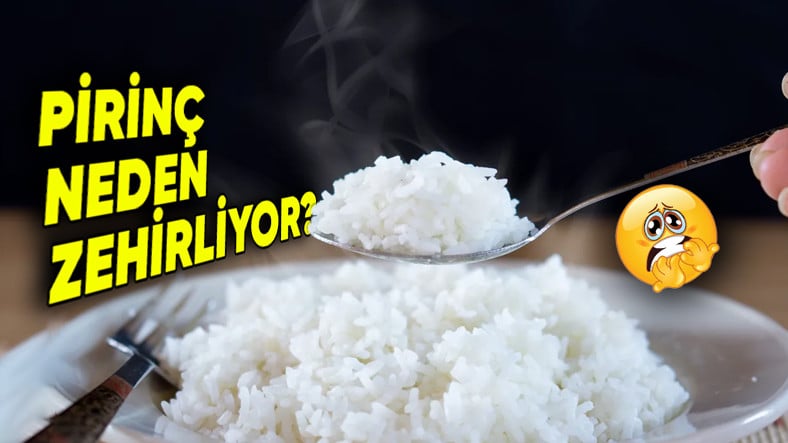Yes, you read that right: a simple plate of rice can be ruined if not stored and reheated properly. It can poison you.
Often consumed but not paid enough attention Rice that poses a serious threat to food safety Let’s get some facts about it.
There is only one culprit and that is the Bacillus cereus bacteria.

Found in some foods, soil and marine reptiles Bacillus cereus bacterial spores, It has a very resilient structure. While the spores survive when you first cook the rice, they produce toxins if left at room temperature.
If we warm up, even if we kill the cells We do not eliminate toxins and this becomes an element that threatens our health.
Most people can handle a certain amount of the toxin, but if the Bacillus cereus bacteria invades the area, It makes us sick.
Food poisoning is common.

When you leave it for a long time, warm it up or reheat it if not cooled quickly The fact that rice causes poisoning is an important detail in food safety research.
Institutions such as the World Health Organization (WHO) and the US Food and Drug Administration (FDA) have determined that Bacillus cereus One of the most common causes of food poisoning He states that it can multiply quickly in foods such as rice.
Food poisonings 2% to 5% It is caused by Bacillus cereus and is known to be most commonly caused by foods such as rice, pasta and potatoes. So we can say that starch and this bacteria are inseparable.
So what are its effects, how does it threaten our health?

If you start to become poisoned by Bacillus cereus, pay attention to the symptoms. within 6 to 12 hours you will notice. Nausea, cramps and lots of vomiting Among the common symptoms. When bacteria multiply in your gut and produce toxins, severe diarrhea can also be added to the symptoms.
Furthermore, it is not that common, that is, because of Bacillus cereus. Your risk of dying is very low. Or let’s say Bacillus cereus, to organ failure Although there are cases of it causing serious infections even resulting in death, these are extremely rare.
How do we prevent rice poisoning?

- Fast cooling: Leave the cooked rice in the room for up to two hours and then cool it quickly. To cool, you can place the rice in a shallow bowl or divide it into small containers and place it in the refrigerator. This prevents bacteria from multiplying.
- Reheating restrictions: Once you have heated the rice, consume it immediately and avoid reheating. The risk of Bacillus cereus spores producing toxins increases with each heating process.
- Retention period: Make sure you don’t store the rice for more than 24 hours. After this period, the risk of bacteria and toxins forming in rice increases.
- Freeze: If rice needs to be stored for a long time, choose the freezer instead of the refrigerator. Freezing makes food safer by stopping reproductive activity.
By being careful when preparing food, you can both protect your health and reduce the potential risks of harmless foods like rice.
Sources: Right as Rain, Cnet, WebMd, Mashable
Here’s our other content that might catch your attention:
Follow Webtekno on X and don’t miss the news

















